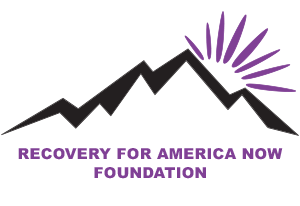MOUD: Clinical Perspective: The Need for Treatment
Medications for the treatment of opioid use disorder (MOUD) and other pharmacological interventions have helped accelerate the field of addiction treatment and saved many lives. The administration of these medications should be closely monitored or tailored within an appropriate treatment regimen. MOUDs are most effective and safe when used with therapy, recovery supports including a vibrant alumni sober community and, a goal of abstinence. Some MOUDs are mood- altering substances, that is you can use them to get high, so without significant appropriate treatment and support MOUDs alone are not the sole answer to our Nation’s addiction crisis.
There are currently three different MOUD drugs used to treat opioid use disorder. Methadone is a powerful long-lasting synthetic opiate (narcotic) that is used to keep people at a maintenance level, so they do not go into withdrawal, don’t get “too” high, and can function in daily life. The long-acting effect (half-life) of Methadone satiates people so they won’t need to use it as often as they do with heroin. Buprenorphine is also a narcotic drug and when mixed with the overdose reversal drug Naloxone it is marketed under the more well-known brand name, Suboxone. This mixed compound results in a ceiling effect that limits how high a person can get. However, methadone and Suboxone will produce intoxication and feelings of euphoria. The third drug, Naltrexone is an opioid blocker (antagonist) that prohibits or counteracts the narcotic effects produced by natural and synthetic opioids.
An unfortunate reality is that MOUDs can be used by individuals, particularly in non-therapeutic settings, to get high. In my own early recovery, I was offered free methadone by someone who was misusing it for its intoxicating effects. Thankfully, I was working a program of recovery, had a sponsor, and cherished my sober time. I not only declined, but my sponsor also called at the exact time this guy was offering me methadone. The guy was also on Naltrexone, and he ingested a large quantity of Methadone tablets in an attempt to overcome the blockade. I didn’t realize it at the time, but this early recovery experience educated me on the need for therapeutic supports to be used in conjunction with these medications.
Many of my former clients are far savvier than expert policymakers acknowledge, particularly with behaviors like injecting Suboxone or trading it for other drugs. In my clinical capacity, many of my former clients had a history of misusing these medications. A person with a severe opioid use disorder is rarely unaware of MOUD medications as most realize these drugs have a street market value. Also, using Suboxone within an inpatient treatment facility can be complicated by the fact that other clients can get jealous that a fellow peer is allowed to ingest a mood-altering substance. An adolescent client once told me the best place to buy dope in a strange city is to hit the nearest methadone clinic. These medications should be used within strict administrative protocols.
Since people are known to act differently when under observation it can be difficult for peer- reviewed studies to present an accurate clinical psychological and behavioral profile of people afflicted with substance use disorder. This dynamic makes it harder to differentiate between a person wanting to get high and somebody with a true desire for recovery, especially at the macro-level.
I want to reiterate our support for pharmacological interventions in the treatment of substance use disorders. I equate MOUD with the use of psychotropic medications that treat mental health disorders when used as directed and in conjunction with therapy. For many people with co-occurring disorders, these medications are essential for good health, lasting recovery, and future success.
MOUD drugs have been called the “gold standard” by experts in the field. No argument here, with the caveat that using therapeutic supports as well helps ensure the “gold standard” is achieved. So, lives saved will become lives fulfilled.
